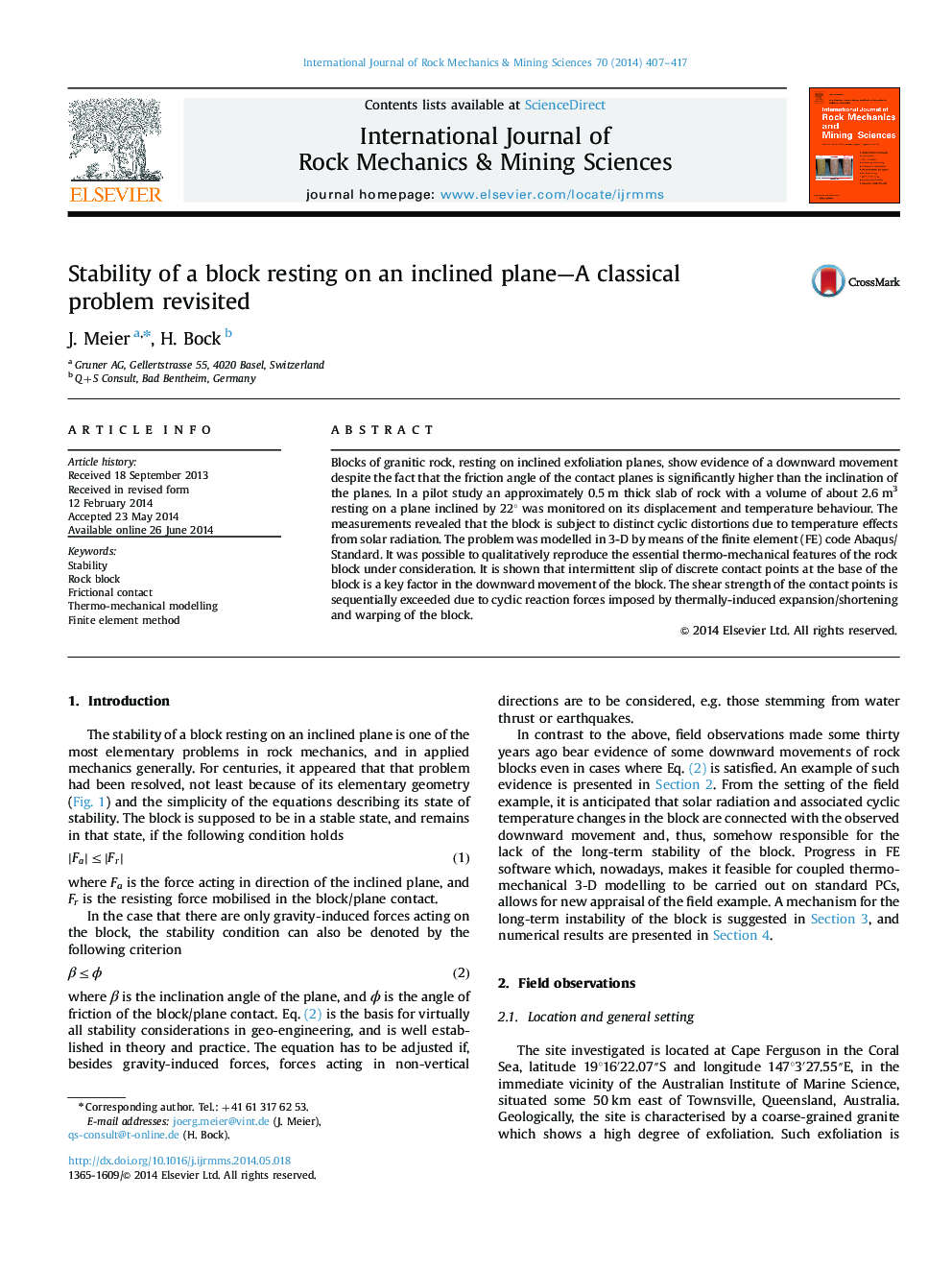| Article ID | Journal | Published Year | Pages | File Type |
|---|---|---|---|---|
| 809111 | International Journal of Rock Mechanics and Mining Sciences | 2014 | 11 Pages |
•Evidence of slow downward movement of rock blocks, resting on inclined planes.•Monitoring of complex diurnal distortion of blocks due to solar radiation.•3-D thermo-mechanical modelling of block behaviour by means of Finite Element Code.•Intermittent slip of discrete contact points, a key factor for block movement.
Blocks of granitic rock, resting on inclined exfoliation planes, show evidence of a downward movement despite the fact that the friction angle of the contact planes is significantly higher than the inclination of the planes. In a pilot study an approximately 0.5 m thick slab of rock with a volume of about 2.6 m3 resting on a plane inclined by 22° was monitored on its displacement and temperature behaviour. The measurements revealed that the block is subject to distinct cyclic distortions due to temperature effects from solar radiation. The problem was modelled in 3-D by means of the finite element (FE) code Abaqus/Standard. It was possible to qualitatively reproduce the essential thermo-mechanical features of the rock block under consideration. It is shown that intermittent slip of discrete contact points at the base of the block is a key factor in the downward movement of the block. The shear strength of the contact points is sequentially exceeded due to cyclic reaction forces imposed by thermally-induced expansion/shortening and warping of the block.
Graphical abstractFigure optionsDownload full-size imageDownload as PowerPoint slide
